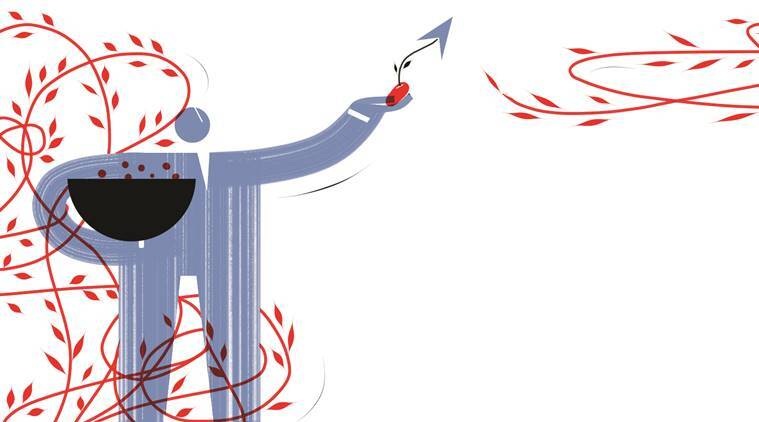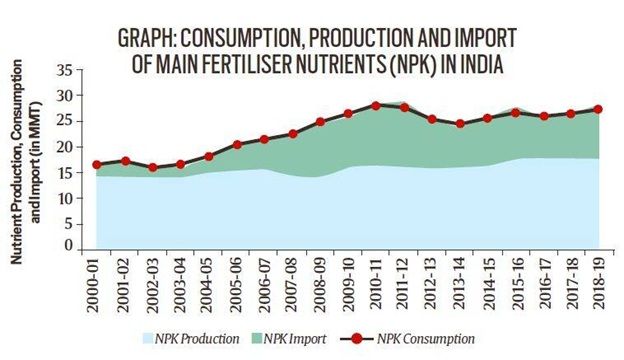In agri-inputs, govt should free private sector from unnecessary controls and regulation

With Prime Minister Narendra Modi’s clarion call for an “Atmanirbhar Bharat” (self-reliant India), I take up here how Indian agriculture can be geared towards that mission. In my last column, (‘Atmanirbhar in agriculture,’ IE, July 6,), I focused on outputs. Here I look at the key agri-inputs — seeds, fertilisers and tractors — to ensure self-reliance in agriculture.
Good seeds are catalysts for change in agriculture. The Green Revolution was ushered in by the import of 18,000 tonnes of high-yielding varieties of wheat seeds, Lerma Rojo and Sonora-64, and IR-8 rice seeds. Today, our granaries are full and India is atmanirbhar in staple crops, thanks to those seeds and the research conducted by the Indian Council of Agricultural Research (ICAR) to improve them. Today, India exports seeds to its neighbouring countries. Even during the lockdown period, hybrid rice seeds were exported through special trains to Bangladesh by the private sector.
India can emerge as an important seed producer and a large exporter of seeds to many developing countries in South and South-east Asia as well as Africa. The country can produce very competitively-priced seeds for hybrid rice, hybrid corn, hybrid Bt HT cotton, and several vegetables including tomato, potato and okra, provided we set our regulatory system right. Let me use the case of cotton to illustrate my point. Former Prime Minister Atal Bihari Vajpayee had taken a bold decision to allow Bt cotton in India in March 2002. That decision made India the largest producer of cotton in the world and the second largest exporter of cotton by 2013-14. But since this government took over in 2014-15, it has waged a continuous battle against large seed companies, especially multinationals and their Indian joint ventures, on issues such as trait fees. As a result, these companies have almost stopped introducing new generation of seeds, and now there is an “illegal” spread of Bt HT cotton in Maharashtra, 15-20 per cent of the area under the crop has been taken up by this counterfeit variety. This is partly because our regulatory system is complex, and more so because the present government has ideological blinkers against modern science. This is the biggest bottleneck holding India back from becoming the seed capital of the developing world. No wonder, in 2019-20, India has once again become a net importer of cotton, taking the clock back to 2002-03.

Let me now turn to fertilisers. India has been a net importer of fertiliser nutrients (NPK) for almost two decades (see graph). In 2019-20, India imported fertilisers worth $6.7 billion. Topping the list is urea ($2.9 billion), followed by diammonium phosphate (DAP, $2 billion) and muriate of potash (MOP, $1.14 billion). We are totally dependent on imports in case of MOP and in case of DAP, we import the rock and the finished product.
Given that we don’t have the raw materials required to produce DAP and MOP, India is likely to remain dependent on imports of these fertilisers. However, in the case of urea, which we imported about 11 million tonnes of in 2019-20, India wants to be atmanirbhar by opening up five new urea plants in the public sector with a total capacity of 6.35 MMT. Almost 70 per cent of the gas being used in urea plants is imported at a price much higher than the price of domestic gas. And of these five, the one in Talcher is based on coal gasification with Chinese technology. The cost of many of these is going to be more than $400/tonne when the international price generally hovers between $250-300/tonne. We know well that in most cases our public sector enterprises turn out to be white elephants saddled with high costs — finally they have to be sold to the private sector. Why did we not allow existing private sector urea plants to expand and produce at a much lower cost? Only the government has the answer.
The best way to achieve atmanirbharta in fertilisers is to change the system of fertiliser subsidies. Deposit equivalent cash directly into farmers’ accounts, calculated on a per hectare basis, and free up fertiliser prices. Allow the private sector plants to compete and expand urea production in a cost competitive manner, be it at home or in countries in the Persian Gulf where gas is much cheaper. That will be true atmanirbharta (self-reliance). Will the Modi government take a call on this or will it create white elephants to be put on the block for privatisation 10 years hence? Only time will tell.
The best example of atmanirbharta in agri-inputs is that of farm machinery, especially tractors. In 1961-62, before the Green Revolution, India produced only 880 tractor units, which increased to about 9,00,000 units in 2018-19, making the country the largest tractor manufacturer in the world. India also exported almost 92,000 tractors, largely to African and ASEAN countries. How did it happen? The Green Revolution gave it a push, but the real break-through came after de-licensing in 1991. Tractor companies compete and bring out better products at low cost. Mahindra and Mahindra leads the pack with an almost 40 per cent share. The new class of entrepreneurs and start-ups are coming up with special apps for “Uberisation of tractor services” so that farmers can avail of these services at low cost, without owning a tractor. In an economy of small landholders, owning a tractor is a high cost proposition as it is not fully utilised. This needs to be made more efficient by creating a market for tractor services.
What is the overall lesson from these three cases of seeds, fertilisers, and tractors? The private sector is our strength. The only thing the government has to do is to unshackle them from the chains of controls and webs of unnecessary regulations. They will make an Atmanirbhar Bharat.
Source : indianexpress